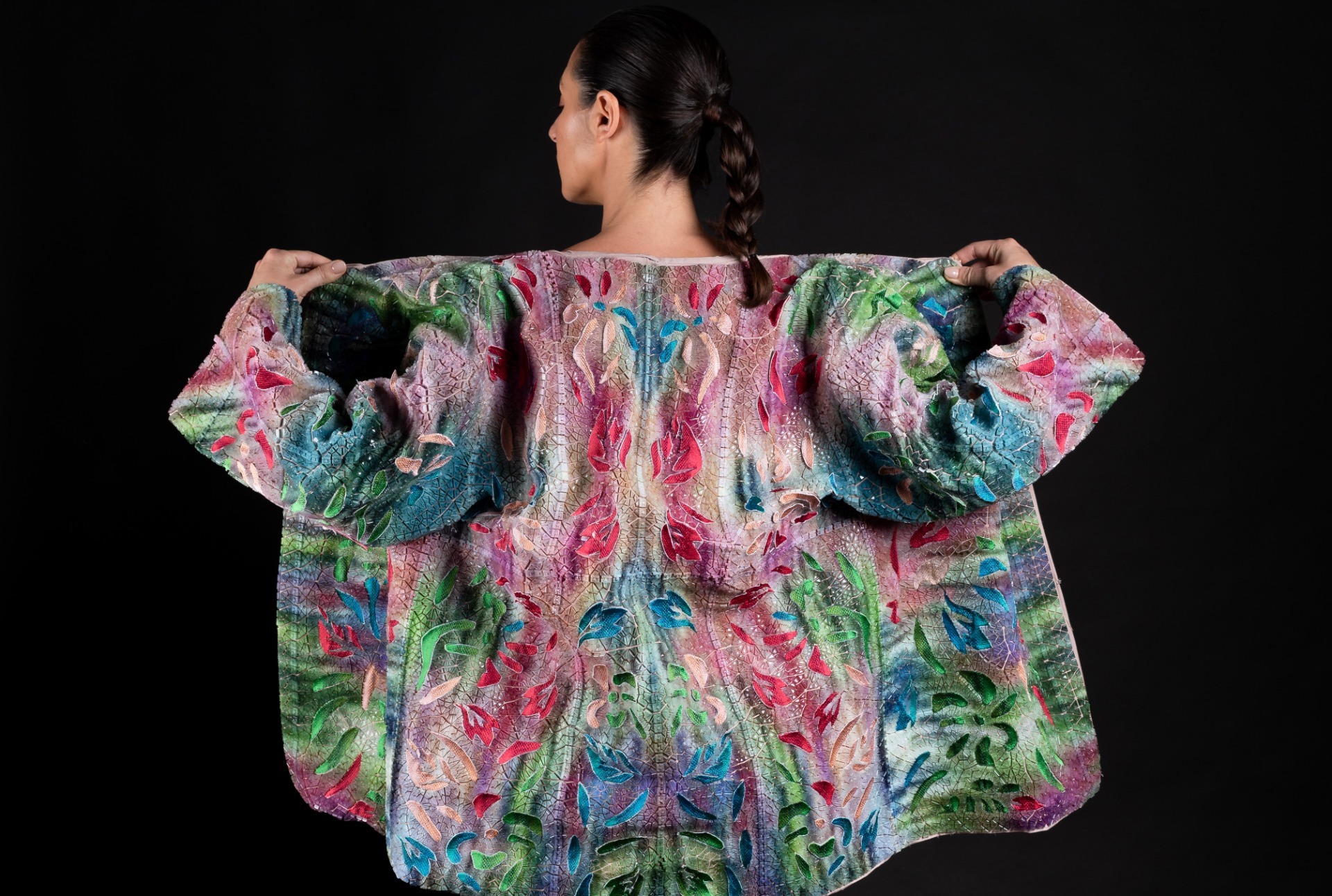Stratasys has today revealed two collaborative works with esteemed fashion designers Ganit Goldstein and Julia Koerner, with whom it has been working to optimize its novel direct-to-textile PolyJet Technology.
The collaborations form part of the research project Re-FREAM, which is funded by the European Union to bring together artists, designers, engineers, and scientists to explore the use of 3D printing within the fashion industry.
“Looking at the fashion world today, I want to introduce a new way of manufacturing – moving away from mass production to customized design,” said Goldstein. “3D printing has always offered the potential to personalize design in ways not possible before, but to truly create a new way to manufacture requires a new kind of textile.”

3D printing in the fashion industry
Offering creative freedom, 3D printing has played an increasingly significant role within recent fashion events such as New York City’s 2019 Met Gala which saw well-known celebrities model outfits 3D printed by GE Additive and Protolabs. Meanwhile, pioneering designers like Iris Van Herpen, who debuted her new 3D printed face jewelry collection ‘Cellchemy’ at Paris Fashion Week 2019, have inspired the take-up of 3D printing by many emerging designers including Mingjing Lin and House of Anesi founder Stephania Stefanakou.
Despite these innovative uses of 3D printing technologies to create separate elements attached to fabric garments, or an entire piece of clothing itself, the technique of 3D printing directly onto clothing is seldom used due to the complexity of the process. During New York Fashion Week (NYFW) 2019, Stratasys unveiled its ability to 3D print directly onto fabric, in collaboration with esteemed fashion designers threeASFOUR and Travis Fitch.
The company hopes this demonstration of the capabilities of its PolyJet Technology can give the world a preview of what fashion design could look like when 3D printing technology and the comfort of fabric are combined.
The collaborations
Koerner revealed her latest collection, ARID, at today’s virtual ARS Electronica Festival. ARID is built around nature-inspired geometries, and the connectivity and adaptability of textiles with multi-color 3D printed parts. The collection consists of 38 3D printed parts that can be combined to form a full dress or be arranged into a number of different looks.
The digital designs were 3D printed directly onto sustainable fabrics in vivid colors using Stratasys’ PolyJet Technology. Personal sizes can be easily adapted through modified 3D printed connectors obtained from 3D scans of the wearer. All seams are connected with 3D printed joinery, which according to Stratasys is the first time 3D printed connectors have been used in the assembly of textiles.
In February last year, Koerner collaborated with Belgian 3D printing service provider Materialise on the film Black Panther, playing her part in the winning of an Oscar at the 91st Academy Awards.

The collaboration with Goldstein focused on combining craft methods with direct-to-textile 3D printing to produce a Japanese-style dress. Inspired by Asian craft embroidery and textile painting, her kimono design follows the Japanese ‘ikat’ coloring method which is made possible by following an algorithm that is composed on the 3D body scan of the kimono, and translated to the print surface during the printing process.
This enables textiles to be leveraged as the skeleton of a garment for the first time in 3D printed fashion, permitting designers to bring unique designs to market which aren’t possible through other methods.
“It’s fashion, it’s important that we continually optimize and evolve to introduce new design forms,” said Goldstein. “During the past year, I experimented with numerous different fabrics and technologies to incorporate 3D printing within textiles. Achieving this milestone takes us away from 2D design and opens up a world of wearable 3D garments.”

Possibilities and potential
The new collaborations between Stratasys, Koerner, and Goldstein have demonstrated the potential for direct-to-textile 3D printing to be a real game-changer in the fashion industry. Re-FREAM’s goal is to fully digitize end-to-end design workflows, enabling the possibility for localized manufacturing and mass customization which many already regard as the future of fashion.
According to Stratasys, commercial interest in its PolyTechnology is already at an advanced stage and pilot-testing is underway.
Nominations for the 2020 3D Printing Industry Awards are still open, let us know who is leading the industry now.
The fourth edition of the 3D Printing Industry Awards Trophy Design Competition is now underway. Enter your design for the chance to win a CraftBot Flow 3D printer.
To stay up to date with the latest 3D printing news, don’t forget to subscribe to the 3D Printing Industry newsletter or follow us on Twitter or liking our page on Facebook.
Are you looking for a job in the additive manufacturing industry? Visit 3D Printing Jobs for a selection of roles in the industry.
Featured image shows Japanese-style kimono produced by Ganit Goldstein using direct-to-textile multi-color 3D printing. Image via Stratasys.



